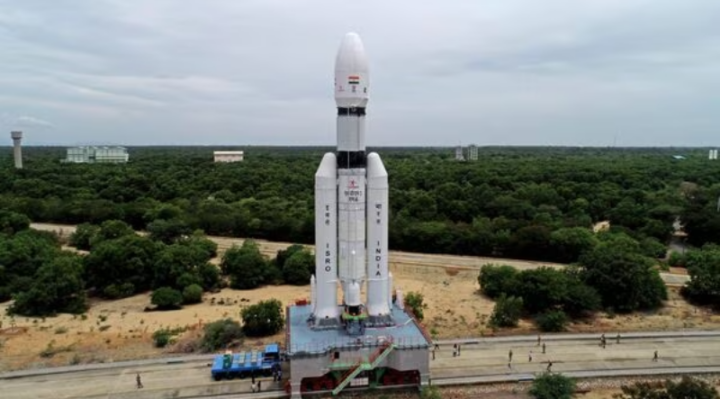It is the gritty story of India’s fightback after failures and heartbreaks in Chandrayaan-3


Back in September 2019, India’s Prime Minister Narendra Modi was pictured hugging and patting K Sivan, the former head of the Indian Space Research Organisation, as the scientist could not control his tears after the space agency lost contact with Chandrayaan 2 lander ‘Vikram’ just as its descent to the Moon was initiated.
The prime minister was also moved to tears.
Video feed from the command center showed coworkers comforting a distressed Sivan by patting him on the back after ISRO lost communication with the lander, Vikram.
But perhaps the will to fight back and rise again was giving life amid the sobs and the dead silence in ISRO’s control room.
Thus, Chandrayaan-3 represents the resilient India’s comeback from setbacks and heartbreaks. Citizens will want a soft landing to advance India to a new peak in this field, together with ISRO and the government of the country.
“Last time, we were unable to complete the Chandrayaan-2 landing mission successfully. So, we’re trying once more this time. All necessary corrective actions are in our plan, Sivan stated. “Moon landing is a difficult task. It’s a difficult job, but we anticipate landing it effectively,” he continued.
On August 23, more than a month after Chandrayaan 3 launched from the Sriharikota spaceport aboard the heavylift LVM3-M4 rocket, the third moon mission from India will try the technically difficult soft landing on the lunar surface.
In reality, Chandrayaan-3’s successful launch serves as a boost for Gaganyaan-1 because a modified version of the same rocket, the LVM-3, will be utilized for India’s first manned mission.
New technologies were created for the Chandrayaan-3 project, including the rover, lander, and indigenous propulsion module. According to Vice Chancellor of Ashoka University and former Director of the Inter-University Centre for Astronomy and Astrophysics in Pune, Somak Raychadhury, these technologies will also be used in the future in other sectors, such as defense, transportation, and healthcare.
“Chandrayaan-3 is a testament to India’s outstanding technological capability and our capacity to carry out ever-more difficult space missions. The New Space Policy provides the ideal framework for improved government-industry cooperation with the long-term objective of elevating India to a significant position in the global space industry. The launch of today will increase investor confidence and draw more private capital into the space industry, he continued.
Additionally, when the Chandrayaan-3 lander Vikram, which is carrying a rover within, soft-lands on the Moon, it would be a significant business milestone for India. With Vikram’s successful landing, India will join an exclusive group of nations. So far, only the US, Russia, and China have been successful in pulling this off. But more significantly, it will be India’s ticket to the moon economy, a developing industry with billions of dollars in potential. The countries that land on the moon first will have the first-mover advantage to benefit from a variety of industries on and around the Moon. The geopolitics of lunar colonialism are still unknown.
When the rate of economic growth around the world slows, space and Moon exploration may help to launch new enterprises and jobs. According to the PwC analysis, the US is expected to dominate the lunar economy by spending $634 billion on launch contracts, or 51% of the overall share between 2020 and 2040.
Another 31% of the worldwide share would be carried out by Asian nations like China and Japan, totaling $387 billion in contracts. According to the report, the EU would assist launch contracts worth $231 billion, or 18% of the total, together with the rest of the world (including the UAE, Canada, Russia, India, and others).


